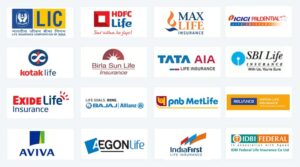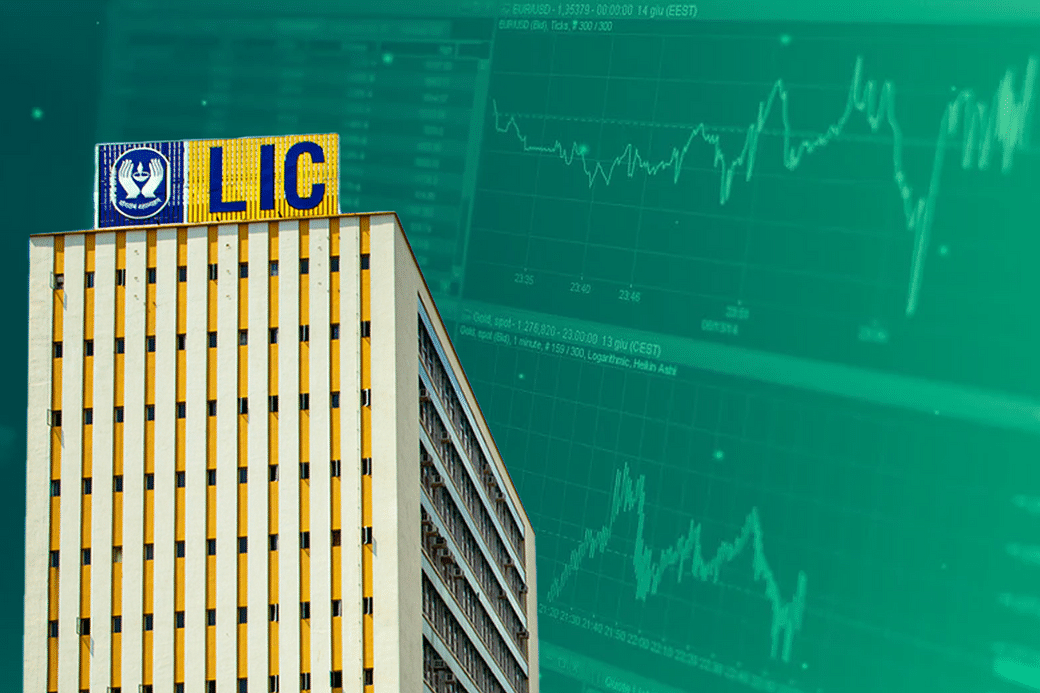The Union government is all set up to file DRHP (Draft Red Herring Prospectus) for the mega IPO of LIC with the market regulator SEBI. The IPO is expected to be in March 2022. Securities Exchange Board of India (SEBI) has started its massive recruitment drive ahead of LIC’s initial public offering .
SEBI has recruited around 850 experienced officials across legal, research, information technology, general and official language departments.
The primary market is fascinating for investors after the IPO frenzy in the recent past, including the successful listing of some new-age companies. LIC IPO, tentatively pegged at ₹70,000 to 1 lakh crores, will be the largest public offering in India. It will surpass some mega public issues like that of Paytm (₹16,600 crores), Coal India (₹15,500 crores), and Reliance Power (₹11,700 crores). From investment bankers to retail investors, everyone is keeping a close eye on the IPO.
The government has appointed Goldman Sachs, Bank of America Securities, Citigroup, JP Morgan JM Financial, SBI Cap, ICICI Securities, Axis Capital, and Kotak Mahindra Capital to manage the IPO. The merchant bankers will form a syndicate to advise on the timing and floor price of the IPO, to the Department of Investment and Public Asset Management (DIPAM). They will also look to conduct due diligence, structure the IPO, prepare DRHP, conduct roadshows and pre-market surveys.
Thirty crore policyholders of LIC in the IPO process will help the investment bankers to determine the best price of the share. The policyholders will reap the benefits out of the privatization of the company.
Valuation of LIC IPO
The valuation of insurance companies, especially LIC, is a difficult task. A large number of products, subsidiaries, market size, makes the valuation trickier.
The government is examining a valuation of ₹13 lakh to 14 lakh crores for state-run LIC. Several numbers are floating in the market. The government is likely to consider a higher market value, while leaving some upside for investors, especially for the retail segment.
The filing of DRHP will be around 12-15th February 2022. The government seeks to democratize their 5% stake. Considering the FY21 profits, the estimated PE could be between 35x to 50x.
The embedded value of the company could be more than ₹5 lakh crores. The Embedded Value (EV) is the consolidated value of a shareholder’s interest in an insurance company. It is the present value of future cash flows and the NAV of the firm.
LIC agents are asking the policyholders to open depository accounts and update PAN numbers on its website as they are eligible for getting the shares at a preferential price.
The conversion of a large chunk of policyholders to shareholders will liberalize the surplus distribution policy. Currently, LIC transfers 5% of its surplus to shareholders and 95% to its policyholders’ fund to bonus eligible policies.

LIC’s competitors
HDFC Standard Life, the largest private-sector player in terms of market cap is trading at a PE multiple of 121x. In the past three months, the stock is down by 15%. Most of the listed insurance companies have underperformed in the past due to pandemic and rich valuations which may not go down well for the state insurer.
LIC is a company that is going to be the market leader for another three to four decades in the life-insurance space as compared to the new-generation companies. Hence, there is a possibility that the investments in LIC will provide good returns.
The overall domestic market has delivered stellar returns of over 65% in FY21 alone. However, the insurance companies have underperformed due to various reasons like slow high claim-ratios, slow premium growth, pandemic induced lockdowns, etc.
The insurance benchmark index was down by 3% in the past three months and gained 7.4% in the last six months, which is still less as compared to the market returns. The returns of listed insurance companies like SBI Life, HDFC Life, ICICI Lombard, ICICI Prudential were not encouraging.

LIC IPO Timing
Indicators suggest that the mega IPO is not well-timed. The issue is delayed beyond its best market time. IPOs in the second and third quarters managed to take away a sizeable chunk of money from the market. But the recent dip in Indian benchmark indices and the poor performance of Star Health Insurance and Paytm hampered the euphoria.
Additionally, the selling spree of the FIIs and high crude prices reflected unfavorable sentiments among the investors. Keeping in mind these factors, it is difficult to say if the upcoming IPO of the insurance behemoth will provide ‘desirable’ returns.
After listing, LIC will join the league of top insurers around the globe by market lap- AIA (Hong Kong-$139 billion), Ping An Insurance Group (China- $138 billion), Prudential (UK- $57 billion).
The market must have enough liquidity to absorb such a high valuation which will help the government bridge the fiscal deficit. LIC’s financial strength and brand value will determine the IPO’s success.
LIC has a 66% market share in terms of premium and will grow 14-15% annually in the next five years. One can expect a price band of ₹ 950-1000. Keeping in mind the stock performance of GIC Re and New India, the policyholders might not support the IPO in a big way. It is difficult to understand the profit and loss matrix of an insurance company.
The government should focus on the timing of the IPO. Delay in the listing is wiser than the embarrassment of an unsuccessful IPO, even if the fiscal deficit of FY22 remains unbridged.

Online sales and tech usage
Generally, insurers earn lower revenues through online mode- bancassurance and brokers. But LIC has seen robust online sales during the pandemic. 72% of transactions and 64% of the premium amounts were collected through electronic and online payment modes.
LIC is also constantly upgrading its technology to give an enterprise-grade experience to remote workers. This ensures efficiency, IT productivity, data security, agility, and greater business continuity. The Bancassurance channel showed positive growth of 23.43% in premium and 0.58% in policies.

LIC IPO success
The company has nearly $500 billion in assets and more than a 65% share in India’s life insurance segment. In addition to heavy advertising, 1.2 million agents have been dispatched to woo 250 million policyholders into becoming retail investors and getting the shares are a preferential price. They can open an electronic stock holding account to participate in the IPO.
PM Narendra Modi wants to gain momentum in the privatization programme. SEBI has ten bankers working 24*7 with them.
The investment bankers have drawn learnings from Paytm’s IPO and will make the issue price attractive. They expect robust demand from retail investors. The government wants to bring a solid set of anchor investors on board. They are in talks with large funds like Singapore’s GIC and Abu Dhabi Investment Authority.
Government’s Divestment Target
IRDA’s approval on LIC’s IPO approval can be expected soon. The company can offer a 5% discount to its policyholders and reserve up to 10% issue size for them.
In the budget FY23, the government has set a divestment target of ₹65,000 crores. The FY22 target was revised to ₹78,000 crores from ₹1.75 lakh crores. So far, the government has raised ₹12,029 crores. The insurer’s IPO is expected to be the biggest public offering in India which will help the government to reach its revised divestment target.
The government has made changes in the foreign direct investment regime, allowing foreign investors to participate in the IPO since the LIC Act does not mention anything about foreign investment. It is expected that 20% of shares will be set aside for foreign investors. Hence, the DRHP will consider US regulations too.
The government plans to offload a 5% stake. They plan to offer 316 million shares out of the 6.32 billion shares in LIC. There will be no fresh issue of shares. The sale is a part of PM Narendra Modi’s plan to increase cash flows and bridge the current deficit.

Financials
The net profits of LIC amounted to ₹1437 crores in H1 FY22 from a mere ₹6 crores in H1 FY20 due to a rise in income from investments despite the increase in bonuses paid and tepid net premium growth. The net profit rose by 12% from the sale of investments, interest, rent, and dividends in the first six months of 2021.
The income from investments rose from ₹1.33 lakh crores to ₹1.49 crores. There was a 1% growth in net premiums after considering reinsurance. The profit rose even after an 8% rise in benefits and bonuses paid to policyholders, amounting to ₹3.08 la
The company’s solvency ratio was 183.37%, higher than regulatory requirements (150%).

ESG Ratings for LIC
The government plans to complete the ESG (Environment, Social and Governance) rating for the insurance behemoth to tap the global pool of ESG-aligned assets. ESG AUM is expected to hit $53 trillion by 2025 globally.
Large companies are reporting their ESG profile in line with the global standards. Indian companies are slow to catch this up, but with the increasing BRSR (Business responsibility and sustainability reporting) standards, the regulatory framework mandates companies to disclose ESG footprint.
LIC will need a credible ESG strategy to work upon its material ESG risks and capitalize on most of the ESG opportunities. A high ESG rating will attract long-term investors and boost the company’s valuation. But the company will have to continuously improve its ESG profile by investing in ESG projects and assets.
LIC holds more than a 1% stake in 281 Indian companies- energy, banking, IT, commodities, etc. All the companies will undergo scrutiny, especially energy companies, because of their weak environmental performance.
CRISIL gave ESG scores to 225 Indian companies. The Financial and IT sector have the highest scores, whereas oil and gas companies lie in the lower end.
LIC’s exposure to oil, gas and thermal companies can potentially tarnish its ESG profile. It has started improving its profile by investing in JSW Energy and Adani Transmission. These companies have high ESG ratings and ambitious green plans in line with global standards.

Conclusion
To conclude, the listing of LIC and other government-owned non-life companies will lead to a better focus on underwriting, products, transparency, risk management, and governance. The pricing inadequacy leads to weak IPO listing. But the renewed focus on underwriting has made the prices competitive. Technology and digitization are essential aspects to increase the profitability of insurance companies.




